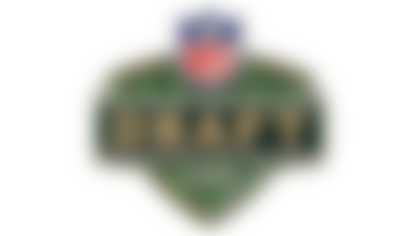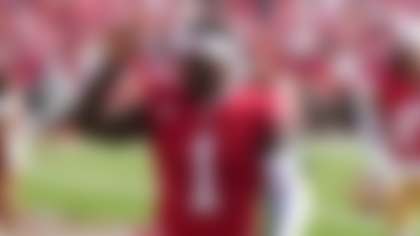I remember how, back in my scouting days with the Carolina Panthers, team officials raved about Julius Peppers' impact on the franchise as a young player. The 2002 Defensive Rookie of the Year notched 12 sacks during his debut season, providing a disruptive presence that elevated the play of his teammates. Peppers became the catalyst of a defense that led Carolina to Super Bowl XXXVIII in his second NFL season and kept the team in contention for much of the aughts.
Thinking ahead to the 2014 season, there are several general managers and coaches around the NFL hoping their top draft picks can make a similar impact on their respective franchises. With that in mind, let's take a closer look at 10 high-profile rookies. What's the best-case scenario? What's the worst-case scenario? Here are my thoughts, with the players listed in order of draft selection:
Jadeveon Clowney, DE/OLB, Houston Texans
Best-case scenario: The Texans would love to see Clowney make a seamless transition to OLB in defensive coordinator Romeo Crennel's hybrid 3-4. While it might take the No. 1 overall pick awhile to pick up the nuances of playing from an upright position on early downs, Clowney should be an immediate contributor as a pass rusher in the Texans' nickel/sub-packages. He could line up next to J.J. Watt to give the unit a 49ers-like combination (as San Francisco had with Justin Smith and Aldon Smith) on stunts and games, or he could align as a bookend opposite the 2012 Defensive Player of the Year. Regardless, the rookie should upgrade a pass rush that's been dangerous for years but finished last season with just 32 sacks (tied for 29th in the league).
Worst-case scenario: If Clowney is unable to grasp Houston's new system as a stand-up linebacker, he could be relegated to duty as a situational rusher. Of course, Aldon Smith thrived in a similar role as a rookie, racking up 14 sacks. Despite Clowney's lofty draft status, the Texans could take a slow approach with their No. 1 pick.
Projection: 42 tackles, 10 sacks, three forced fumbles.
Blake Bortles, QB, Jacksonville Jaguars
Best-case scenario: The Jaguars would love to "redshirt" Bortles this season, allowing the young signal-caller to slowly acclimate to the pro game. While it's unusual in today's NFL climate for a top quarterback to spend his rookie season on the sideline, the long-term success of various QBs who were gradually introduced to the pros (guys like Aaron Rodgers, Carson Palmer and Philip Rivers) could help encourage the Jaguars to stick to their game plan.
Worst-case scenario: Bortles was the first quarterback selected last month, but most draftniks believe he is a developmental prospect who needs some seasoning before taking the field. Thus, the worst-case scenario could be the Jags finding themselves in a position where they have to rush the rookie into action as a starter. Bortles could outplay Chad Henne in training camp, making a case for the No. 1 job, but letting the veteran direct the team in 2014 would allow the youngster to hone his game and set himself up to take over at the beginning of the 2015 campaign.
Projection: Not really applicable, given the situation detailed above.
Sammy Watkins, WR, Buffalo Bills
Best-case scenario: The Bills are counting on Watkins to add juice to the passing game as the No. 1 option on the perimeter. The 6-foot-1, 205-pound speedster is a dynamic catch-and-run playmaker who also excels as a deep threat on the outside. With the Bills increasing the pace and tempo of their attack this season, Watkins will get plenty of touches on quick throws, bubble screens and deep shots designed to take advantage of a fatigued defense. With an offense looking for more explosive plays in the passing game, Buffalo should work to get Watkins at least six to eight touches per game.
Worst-case scenario: Rookie receivers typically struggle with the NFL transition, thanks to the complexities of the pro passing game. Watkins could encounter some growing pains, considering that he played in a spread offense at Clemson that didn't feature a lot of route conversions based on coverage. (Thus, he might have a tough time identifying sight adjustments and hot routes in the Bills' passing game.) Additionally, Watkins' lack of experience running pro-style routes could prevent him from making an immediate impact as a No. 1 receiver.
Projection: 65 catches, 950 receiving yards, seven touchdowns.
Khalil Mack, DE/OLB, Oakland Raiders
Brandt: Instant-impact rookies
Forget about depth-building developmental prospects -- Gil Brandt lists six rising rookies poised to turn heads with their play now. **READ**
Best-case scenario: The Raiders needed a dynamic defender to add some splashiness to a unit that struggled to create big plays in 2013. Mack is a monster off the edge who has the ability to make plays as a rusher or in coverage. Head coach Dennis Allen could tap into Mack's versatility by using the Buffalo product like he used Von Miller in Denver during his lone season as the Broncos' defensive coordinator. (Miller, of course, was named Defensive Rookie of the Year that season.) Thus, Mack could play as a stand-up linebacker on early downs, then line up as a designated rusher in passing situations to create chaos off the edge.
Worst-case scenario: Small-school prospects routinely take a little longer to adjust to the speed and tempo of the pro game. Although the MAC routinely produces NFL talent, Mack didn't face elite players on a weekly basis over the past few years at Buffalo. Consequently, it could take him until midseason to figure out how to win consistently against top-notch talent.
Projection: 93 tackles, 6.5 sacks, three interceptions, two forced fumbles.
Mike Evans, WR, Tampa Bay Buccaneers
Best-case scenario: The Buccaneers added Evans to the lineup to alleviate some of the pressure on three-time Pro Bowl receiver Vincent Jackson. Evans is the right man for the job, possessing a size/speed combination that makes him nearly impossible to guard on the perimeter. Additionally, the former Texas A&M star's athleticism makes him a big target in the red zone on 50-50 throws. New offensive coordinator Jeff Tedford is adept at maximizing the talents of his receivers (check the production of DeSean Jackson, Keenan Allen, Marvin Jones, Lavelle Hawkins and others at Cal), and Evans could enjoy a monster rookie campaign as Jackson's sidekick.
Worst-case scenario: Evans' experience in Texas A&M's spread offense didn't fully prepare him for the pro game. He lined up extensively on the right side of the formation and didn't run a pro-like route tree. Evans will need some time to adjust to a pro-style offense, which could affect his productivity as a rookie. If he struggles to master the basics of the offense, the Bucs might be forced to rely on a one-dimensional passing game or lean on the running game to anchor the game plan.
Projection: 50 catches, 800 receiving yards, five touchdowns.
Anthony Barr, OLB, Minnesota Vikings
Best-case scenario: Vikings coach Mike Zimmer has been tight-lipped about his plans for Barr, but there are rumors about a Von Miller-like role for the rookie. Barr is penciled into the starting lineup as a SAM linebacker, which would place him opposite the tight end in an "under" defense. This would allow Barr to use his hands to jam and disrupt big-bodied pass catchers at the line while also tasking him to set the edge on run plays. He could become a designated edge rusher in the Vikings' nickel package, giving the unit a dynamic defender to spice up a pass rush that will be without Jared Allen for the first time in seven years. Given Barr's athleticism and production as a pass rusher at UCLA, the hybrid role could pay immediate dividends for the Vikings.
Worst-case scenario: Barr spent just two seasons as a linebacker at UCLA, so he is still a raw player at the position. Thus, the Vikings have to carefully weigh the pros and cons of loading him up with responsibilities before he is fully comfortable with the pro game. Additionally, Barr must become comfortable dropping in space and covering tight ends/wide receivers in the slot. Juggling so many new responsibilities could prevent Barr from making an immediate impact.
Projection: 65 tackles, 7.5 sacks, four forced fumbles, one interception.
Eric Ebron, TE, Detroit Lions
Best-case scenario: The Lions' offense revolves around Calvin Johnson, but new offensive coordinator Joe Lombardi wants to diversify the distribution of touches to help the unit flourish against NFC North foes. Ebron gives the Lions a big-bodied athlete to create mismatches on the perimeter -- a la Jimmy Graham for the New Orleans Saints, Lombardi's prior employer. Thus, Ebron could become the Lions' No. 2 option in the passing game, particularly in the red zone, where his size and athleticism should be a factor.
Worst-case scenario: Ebron is a naturally blessed athlete, but his game is still a work in progress at this time. He hasn't mastered the art of route running, which could prevent him from working free in tight coverage. Although the Lions can create easy opportunities for Ebron on a variety of quick-rhythm routes, the rookie must get up to speed as a route runner to be a standout performer.
Projection: 45 catches, 550 receiving yards, five touchdowns.
Brandin Cooks, WR, New Orleans Saints
Best-case scenario: Cooks is the most polished receiver entering the NFL in 2014, with a game built on speed, quickness and explosiveness. Those traits not only make him a terrific playmaking threat on the perimeter, but they also could allow him to become an impossible cover in the slot. With the Saints looking to offset the departures of Darren Sproles and Lance Moore, Cooks could get a prime role in the offense as a rookie.
Worst-case scenario: As mentioned above, rookie receivers generally have a tough time adjusting to the NFL, particularly in complex offenses with a number of reads in the passing game. Thus, Cooks' career could get off to a slow start in New Orleans if he isn't able to master the nuances of coach Sean Payton's dynamic system. While it's unlikely that the creative schemer will fail to take advantage of Cooks' unique talents, it could take awhile for the rookie to find his identity in the Saints' offense.
Projection: 50 catches, 800 receiving yards, six touchdowns.
Johnny Manziel, QB, Cleveland Browns
Best-case scenario: New Browns coordinator Kyle Shanahan is capable of building an attack around an unorthodox playmaker -- just look at the young offensive wizard's prior work with Robert Griffin III in Washington. Thus, it's easy to envision Manziel making a ton of plays in a Cleveland offense that could feature a number of designed quarterback runs and movement-based passes to take advantage of the 2012 Heisman Trophy winner's athleticism and improvisational skills. If Manziel can outplay veteran Brian Hoyer to earn the starting nod, it's definitely possible the perceived party boy could walk away with Offensive Rookie of the Years honors on the strength of a spectacular highlight reel.
Worst-case scenario: For all of the excitement and enthusiasm generated by Manziel's arrival, the Browns must prepare to deal with the fallout of having a young gunslinger at quarterback. While the rookie's supreme confidence and improvisational savvy will produce fireworks for the Dawg Pound, Manziel will make a number of miscues that put the team in harm's way in 2014. The Browns expect some hiccups, of course, while the youngster gets acclimated to the NFL. But a turnover-plagued rookie season could crush Manziel's confidence and prevent his teammates from fully endorsing his "boom or bust" game.
Projection: 3,500 passing yards, 20 passing touchdowns, 16 interceptions, 59 percent completion rate, 600 rush yards, eight rushing scores.
Teddy Bridgewater, QB, Minnesota Vikings
Best-case scenario: Bridgewater is not only the most pro-ready quarterback in this class, but he lands in the best situation to succeed as a young player. He is flanked by an All-Pro back (Adrian Peterson) and a wealth of dangerous weapons on the perimeter (Cordarrelle Patterson, Greg Jennings and Kyle Rudolph), thus allowing him to function as a game manager from the pocket. If Bridgewater can take the starting job from Matt Cassel early and stick to playing like a pass-first point guard, he can help the team get back into playoff contention this season.
Breer: Inside a quarterback hunt

What makes the Vikings so confident about Teddy Bridgewater? Albert Breer chronicles the team's exhaustive process. **READ**
Worst-case scenario: The Vikings are happy to have Cassel serve as a temporary placeholder, but team officials surely want the No. 32 overall pick to claim the job quickly -- if not in training camp. The rookie is the future for the franchise at the position, so it's important for him to show he is ready for the job early in the season, to inspire hope and optimism throughout the organization. A prolonged incubation period would be a major disappointment.
Projection: 3,200 passing yards, 23 passing touchdowns, 11 interceptions, 62 percent completion rate.
Follow Bucky Brooks on Twitter @BuckyBrooks.












